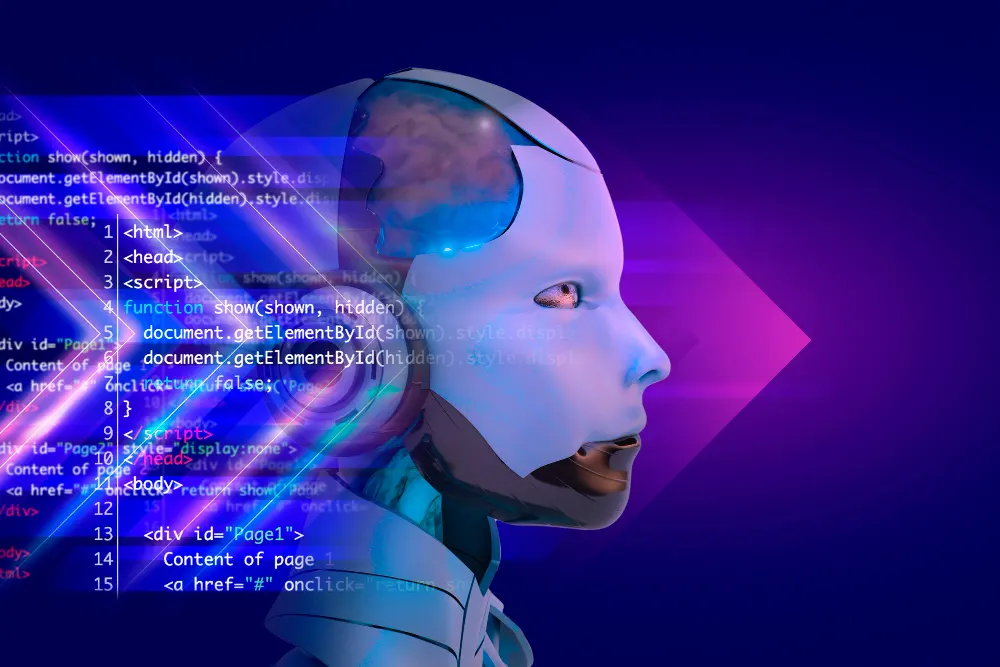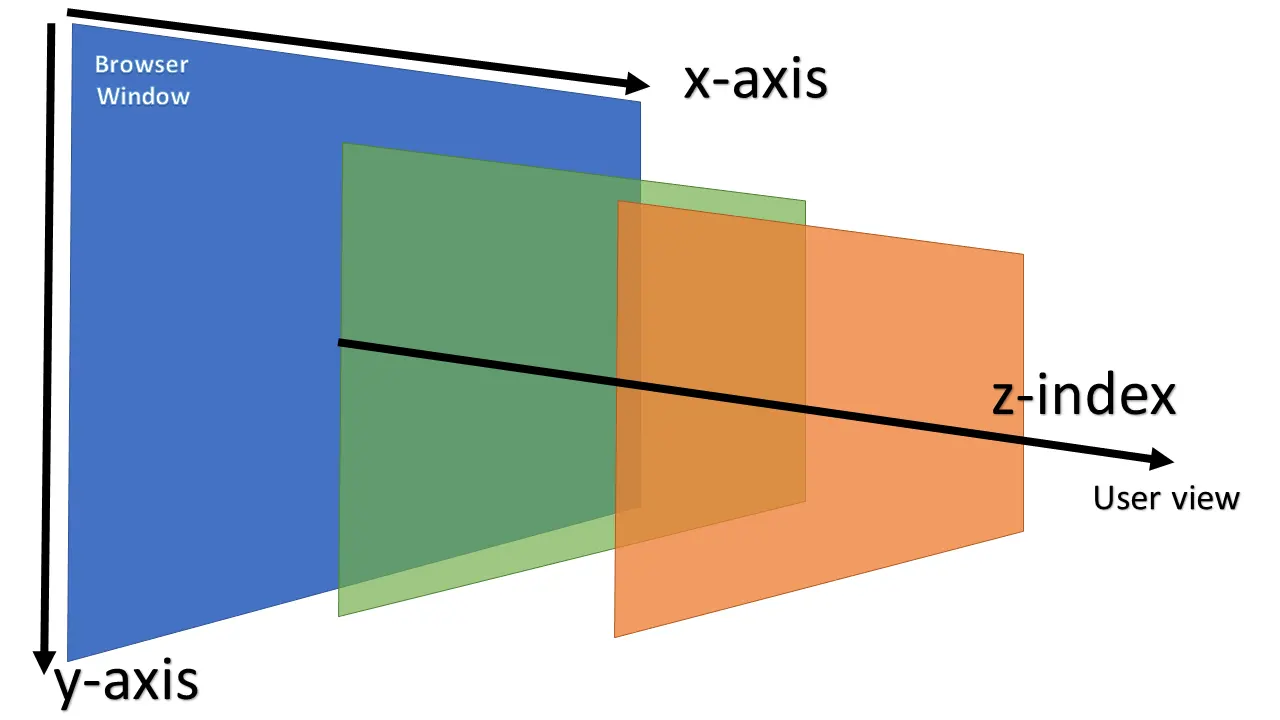The world of web development is constantly evolving, and as we look ahead to 2026, several exciting trends are set to redefine how websites are created, designed, and experienced. The rapid advancements in technology, including AI tools, blockchain, and enhanced user experiences, will shape the future of web development in ways we can’t even fully imagine today. In this article, we’ll explore the key trends that will dominate the web development landscape in 2026. 1. AI-Powered Web Development Tools Artificial Intelligence (AI) will be one of the biggest driving forces in web development by 2026. AI tools are already helping developers automate various tasks, but in the future, they will take on even more significant roles in coding, debugging, and improving websites. How AI Will Revolutionize Web Development: Why this matters: AI will enable developers to work faster and more efficiently, cutting down on mundane tasks and giving more time for creative and strategic work. For businesses, AI will help deliver smarter, user-tailored websites that improve engagement and customer satisfaction. 2. Serverless Architecture and Cloud-Native Solutions The shift toward serverless architecture and cloud-native development will continue to accelerate by 2026. These technologies will allow developers to build scalable, high-performance websites without the need to manage server infrastructure. Benefits of Serverless and Cloud-Native Development: Why this is important: Serverless and cloud-native technologies make web development simpler, more scalable, and cost-efficient. These tools allow developers to focus on creating high-quality websites, while cloud services handle the heavy lifting. 3. Responsive and Adaptive Design Beyond Mobile-First Responsive design, which ensures websites look great on all devices, will continue to be a core focus. However, by 2026, websites will need to go beyond simple mobile responsiveness and adapt to even more nuanced user needs. How Design Will Evolve: Why it’s crucial: Creating a seamless experience across multiple devices is no longer enough. In 2026, websites will need to be truly adaptive, offering a customized experience based on user context and behavior. This will result in higher engagement and better conversion rates. 4. Voice and Gesture-Based User Interfaces As voice assistants like Siri, Alexa, and Google Assistant become more common, it’s no surprise that voice-controlled websites will be part of the web development future by 2026. Gesture-based navigation is also on the rise, with devices like smart glasses gaining popularity. What to Expect: Why it’s important: Voice and gesture-based interfaces will make websites more intuitive, allowing for hands-free, personalized user interactions. This trend will cater to a broader audience and improve accessibility. 5. Blockchain and Decentralized Web Technologies Blockchain and decentralized technologies (Web3) will become more integrated into web development, providing greater transparency, security, and user control over data. How Blockchain Will Shape the Web: Why it matters: As data privacy concerns continue to rise, blockchain will offer a more secure, transparent, and user-controlled alternative to the current centralized web infrastructure. 6. Advanced Motion UI and 3D Web Elements Websites will become more immersive, interactive, and visually dynamic. Advanced motion UI, animations, and 3D elements will be used to engage users, making the browsing experience more enjoyable and memorable. What’s Next in Motion UI: Why it’s important: Motion UI and 3D elements make websites more visually appealing and interactive, increasing user engagement. The more engaging your website, the more likely users will stay longer and explore more content. 7. Sustainability in Web Development As the world becomes more focused on sustainability, web developers will be expected to adopt eco-friendly practices when building websites. How Web Development Will Go Green: Why it’s important: As global concerns about climate change grow, adopting sustainable practices will not only help reduce the environmental footprint but also align with the values of eco-conscious users. 8. The Impact of 5G and Edge Computing With the global rollout of 5G networks and the rise of edge computing, web development will see significant changes, particularly in terms of speed, performance, and user experience. What’s Changing with 5G and Edge Computing: Why it matters: 5G and edge computing will enable richer, more interactive websites with minimal delays, opening up new possibilities for immersive web applications. Conclusion As we move into 2026, web development is poised for a transformation driven by emerging technologies such as AI, blockchain, voice controls, and 5G. These innovations will not only make websites faster and more interactive but will also create opportunities for more personalized, secure, and sustainable web experiences. By embracing these trends, developers can stay ahead of the curve and continue to create websites that meet the evolving needs of users and businesses alike. Keep an eye on these trends, as they will shape the future of the web and open up exciting possibilities for the years ahead.
Web
- Preet Sandhu
- 0 Comments
Solving Z-Index Issues in CSS: How to Manage Layering of Elements
Introduction In web development, managing the layering of elements is crucial to create a visually appealing and functional design. One of the most common issues developers face is working with CSS z-index. When elements overlap, the z-index helps define their stacking order. However, improper use of z-index can lead to unwanted behavior, such as hidden elements or poor user experience. In this guide, we’ll walk through how to solve z-index issues in CSS, understand its principles, and provide actionable tips to manage layering effectively. What is Z-Index in CSS? The z-index in CSS is a property that determines the stacking order of elements that overlap. The higher the value of the z-index, the closer the element is to the front. Elements with a lower z-index are stacked behind those with a higher z-index. Syntax: cssCopyEditelement { position: relative; /* or absolute/fixed */ z-index: 1; /* Number value */ } Understanding the Z-Index Context To properly use z-index, an element must be positioned. It can be relative, absolute, fixed, or sticky. Static positioning (the default) does not allow the use of z-index. Positioning and Z-Index cssCopyEdit/* Positioning and Z-index example */ div { position: relative; z-index: 2; } If two elements are positioned and have a z-index, the element with the higher z-index value will appear in front of the other. Common Z-Index Issues and How to Fix Them 1. Z-Index Not Working as Expected If you notice that z-index is not producing the desired effect, it may be because the stacking context is not properly set up. Solution: Ensure that the element is positioned and that other elements in the stacking context (e.g., parent or sibling elements) do not have conflicting z-index values. Example of the Stacking Context Issue: cssCopyEdit.parent { position: relative; z-index: 1; } .child { position: absolute; z-index: 2; /* Will not work if parent has a z-index */ } Fix: Set a z-index on the parent or remove conflicting stacking contexts. 2. Child Element Being Hidden Behind Others If a child element is being hidden behind other elements, it’s likely because of a parent stacking context issue or because other elements in the hierarchy are not ordered correctly. Solution: Use positioning with z-index to ensure proper stacking order. You can also check the opacity of parent elements, as opacity values less than 1 can create stacking contexts. Example: cssCopyEdit.parent { position: relative; z-index: 10; } .child { position: absolute; z-index: 20; /* Ensure this is higher */ } 3. Z-Index on Overlapping Elements in a Flexbox or Grid Flexbox and Grid layouts can also create complex stacking issues. Elements that are part of these layouts might not behave as expected due to their default z-index behavior. Solution: Ensure elements are positioned inside a flex or grid container. Then, assign a z-index value to manage layering. Flexbox Example: cssCopyEdit.container { display: flex; position: relative; } .item { position: absolute; z-index: 1; /* Stack relative to sibling elements */ } 4. Handling Nested Z-Index Issues When you have multiple nested elements with z-index values, you may experience conflicting stacking orders between parent and child elements. Solution: Always define a clear z-index hierarchy and use parent elements to control the stacking of children. Avoid large jumps in z-index values unless necessary. Nested Z-Index Example: cssCopyEdit.outer { position: relative; z-index: 10; } .inner { position: absolute; z-index: 5; /* Will stack behind .outer */ } Best Practices for Using Z-Index Troubleshooting Z-Index Issues When troubleshooting z-index problems, follow these steps: Conclusion Mastering the use of z-index is essential for controlling the layering of elements in CSS. By understanding the fundamentals of z-index, proper positioning, and avoiding common mistakes, you can create well-organized and visually appealing layouts. Remember to keep your z-index values manageable and follow best practices to avoid confusion and conflicts.
- Preet Sandhu
- 0 Comments
How to Implement Responsive Web Design with Media Queries
When it comes to web development, ensuring your website looks great on all devices—whether it’s a desktop, tablet, or smartphone—is crucial. This is where responsive web design (RWD) comes into play. By making your website responsive, you ensure it automatically adjusts its layout and content depending on the screen size of the device it’s being viewed on. The backbone of responsive web design is media queries. In this article, we’ll break down what media queries are, why they’re important, and how to use them effectively to create a mobile-first website. What is Responsive Web Design (RWD)? Responsive web design is an approach that allows your website to adapt its layout and content to fit different screen sizes. In simpler terms, a responsive design ensures that a website looks just as good on a small mobile screen as it does on a large desktop monitor. The goal is to make your website as user-friendly as possible, no matter what device people are using. Why is Responsive Design Important? Understanding Media Queries Media queries are a powerful feature in CSS that allow you to apply different styles to a webpage based on the characteristics of the device it’s being viewed on, such as the screen width, height, resolution, and more. In simple terms, media queries let you “ask” the browser: “Hey, is the screen width less than 600px? If yes, apply these styles.” If the condition is met, the specific styles inside the media query are applied. Basic Syntax of a Media Query The basic structure of a media query looks like this: @media (condition) { /* CSS rules go here */} Here, the condition could be something like max-width or min-width, and the rules inside the media query will only be applied when that condition is true. Mobile-First Design Mobile-first design is an approach where you start by designing for mobile devices first, then use media queries to adjust the layout for larger screens. This approach is important because the majority of web traffic today comes from mobile devices. For example, let’s say you start by creating a simple mobile layout and then expand on it using media queries for larger screens. Here’s how you would use media queries in a mobile-first approach: Media Query Examples for Different Screen Sizes 1. Targeting Mobile Devices (up to 600px) For mobile devices, we’ll set a max-width of 600px. This will target smartphones and small screens. For small devices, we might want to adjust the font size or layout to make it easier to navigate on a smaller screen. @media (max-width: 600px) { body { font-size: 14px; } header { text-align: center; }} In this example: 2. Targeting Tablets (600px to 900px) For tablets, we usually work with a min-width of 600px and a max-width of 900px. This range will target devices like iPads and Android tablets. @media (min-width: 600px) and (max-width: 900px) { body { font-size: 16px; } header { text-align: left; }} Here: 3. Targeting Desktops (900px and above) For desktops, we typically use a min-width of 900px or higher. This targets large screens like laptops and desktops. @media (min-width: 900px) { body { font-size: 18px; } header { text-align: left; margin-left: 20px; } .container { max-width: 1200px; margin: 0 auto; }} In this example: 4. Targeting High-Resolution Screens (Retina Displays) For high-resolution screens (like Retina displays on Macs or iPhones), you can use the min-resolution or min-device-pixel-ratio query to make images and text sharper. @media (min-resolution: 2dppx) { img { width: 100%; height: auto; }} This targets devices with high pixel densities and ensures images scale properly for these screens, providing a crisp, clear appearance. More Types of Media Queries 1. Orientation You can target whether the device is in portrait or landscape mode. This is particularly useful for ensuring your website looks great on devices that can be rotated. @media (orientation: landscape) { body { background-color: #f0f0f0; }} This will apply the specified styles when the device is in landscape mode. 2. Aspect Ratio You can also target devices based on their aspect ratio (the width-to-height ratio). @media (aspect-ratio: 16/9) { body { background-color: #333; }} This targets devices with a 16:9 aspect ratio, like most widescreen monitors. 3. Color Scheme (Dark Mode) With the increasing popularity of dark mode, it’s important to account for users who prefer a darker interface. You can use the prefers-color-scheme media feature to apply different styles based on the user’s theme preference. @media (prefers-color-scheme: dark) { body { background-color: #121212; color: #ffffff; }} This will apply dark mode styles if the user has set their device to dark mode. Conclusion Media queries are the heart of creating responsive websites. By using media queries, you can design a website that adapts to various devices and screen sizes, providing a seamless user experience. Whether you’re targeting mobile devices, tablets, or desktops, media queries allow you to adjust styles based on the specific needs of the device. By embracing a mobile-first approach and using media queries effectively, you’ll be able to ensure your website looks great on any screen, boosting both user satisfaction and your site’s performance. Happy coding!
- Preet Sandhu
- 0 Comments
Best Websites to Learn Web Development for Free
Want to learn web development but don’t want to break the bank? Good news—there are plenty of awesome, free resources out there to help you get started! Whether you’re a complete beginner or looking to level up your coding skills, the internet has a wealth of free tools, courses, and tutorials to guide you on your web development journey. Let’s take a look at some of the best websites where you can learn web development for free! 1. FreeCodeCamp Website: freecodecamp.org FreeCodeCamp is like the ultimate web development bootcamp—totally free, and packed with tons of lessons. You can go through a complete curriculum that covers everything from front-end basics to back-end tech. It’s a hands-on platform, so you’ll be writing code as you go, which is awesome for practice. What You’ll Learn: Plus, you’ll get certifications as you complete each section, which is a nice bonus if you’re looking to build your resume. 2. MDN Web Docs (Mozilla Developer Network) Website: developer.mozilla.org If you want solid, reliable web development documentation, look no further than MDN. Mozilla’s Web Docs is a goldmine for anyone looking to dive into web development. Whether you’re a newbie or an experienced dev, it’s packed with beginner guides, deep dives, and interactive tutorials. What You’ll Learn: It’s a must-visit resource for anyone serious about web development! 3. The Odin Project Website: theodinproject.com If you’re ready to dive deep into full-stack development, The Odin Project has got your back. This platform offers a complete, hands-on curriculum with a strong emphasis on building real projects, so you can show off your skills when it’s time to look for jobs. What You’ll Learn: The Odin Project’s community is also super supportive, which makes it easier to get help if you get stuck. 4. W3Schools Website: w3schools.com W3Schools is a classic and for good reason. This site has been around for years and provides a ton of tutorials and interactive exercises. It’s super easy to use and great for beginners who want to learn the basics quickly. What You’ll Learn: With its simple explanations and interactive quizzes, W3Schools is a great platform for anyone just starting out. 5. Coursera (Free Courses) Website: coursera.org Coursera is a well-known platform that offers courses from top universities and organizations around the world. While some courses require payment, you can audit most of them for free, which gives you access to the content without paying a dime. What You’ll Learn: Courses are taught by experts, so you can be sure you’re learning from the best in the industry. 6. Codecademy (Free Plan) Website: codecademy.com Codecademy is another awesome site with interactive lessons and real-time coding challenges. While the Pro version has a lot more features, the free version still offers a solid amount of content to get you started with web development basics. What You’ll Learn: If you’re someone who learns best by doing, Codecademy’s hands-on approach will definitely suit your style. 7. Khan Academy Website: khanacademy.org Khan Academy is known for making complex subjects super easy to understand, and their web development section is no exception. They offer a fun, interactive learning experience, where you can start building projects from the very first lesson. What You’ll Learn: It’s perfect for beginners who want a more playful, engaging way to learn web development. 8. Udemy (Free Courses) Website: udemy.com Udemy is a huge online learning platform with courses on practically every subject imaginable, including web development. While most of the courses are paid, there are plenty of free options that cover everything from HTML basics to advanced frameworks. What You’ll Learn: Udemy is great for learners who prefer structured courses with video tutorials and assignments. 9. LinkedIn Learning (Free Month) Website: linkedin.com/learning LinkedIn Learning offers a month-long free trial that gives you access to all their courses, including web development topics. This platform features professional courses taught by industry experts, so you know you’re getting high-quality content. What You’ll Learn: It’s an excellent option if you want to learn quickly and have the time to dive into a full month of learning. 10. SoloLearn Website: sololearn.com SoloLearn is perfect for those who want to learn web development on the go. Their mobile-first platform offers bite-sized lessons and coding challenges, making it easy to fit learning into your daily routine. What You’ll Learn: SoloLearn’s gamified approach keeps you motivated, and the community is super active, so you’ll always have someone to chat with when you need help. Conclusion So, there you have it—10 amazing websites where you can learn web development for free. Whether you prefer structured courses, hands-on coding, or just reading through documentation, there’s a platform here for everyone. The key to success is consistency, so start small, keep learning, and soon enough, you’ll be building websites like a pro! Happy coding!
- Preet Sandhu
- 0 Comments
How to Improve Your Google Rankings in 2025: A Step-by-Step Guide
In 2025, SEO continues to be one of the most critical components of digital marketing. Google’s algorithms are evolving rapidly, and staying ahead of the curve is crucial for businesses, bloggers, and digital marketers alike. With billions of websites competing for attention, achieving a top ranking on Google search results requires strategic planning, consistent effort, and a thorough understanding of SEO practices. In this detailed guide, we’ll walk you through the essential steps to improve your Google rankings in 2025. Whether you’re new to SEO or an experienced marketer looking to refine your skills, this step-by-step guide will help you achieve long-term success. 1. Understand Google’s Algorithm Updates in 2025 Before diving into the steps to improve your rankings, it’s essential to understand how Google’s algorithms work and how they’re expected to evolve in 2025. Google’s algorithm changes regularly, and staying updated on these changes is crucial for maintaining or improving your rankings. Some significant factors influencing Google’s algorithms in 2025 include: By understanding how Google evaluates websites, you can better tailor your SEO strategy to meet these expectations. 2. Conduct Comprehensive Keyword Research Effective keyword research is the foundation of any successful SEO strategy. In 2025, SEO is about targeting more specific, long-tail keywords that reflect the nuanced search behavior of users. Here’s how to conduct thorough keyword research: Use Advanced Keyword Research Tools There are various tools available to conduct keyword research, including: Focus on Search Intent In 2025, Google’s ability to understand search intent has improved significantly. People search not just for keywords, but with a clear intent—whether it’s informational, transactional, or navigational. Ensure that you target keywords that match the specific intent behind search queries. Long-tail Keywords and Voice Search With the rise of voice search and mobile queries, long-tail keywords (more specific and longer search phrases) have become increasingly important. These keywords tend to have lower competition and higher conversion rates. 3. Create High-Quality, Engaging Content Content remains king in SEO, and Google’s focus on user experience means that your content should be helpful, informative, and valuable. Here’s how to create content that ranks in 2025: Prioritize E-A-T Principles (Expertise, Authoritativeness, Trustworthiness) To improve your Google ranking, Google needs to trust you. Build your website’s E-A-T by: Write for Humans First, Then Search Engines While it’s essential to use keywords, your content should prioritize readability and value. Google’s AI is becoming smarter, so keyword stuffing or creating content solely for search engines can lead to penalties. Focus on the User Experience Your content should answer the searcher’s question comprehensively. Content that offers complete, well-structured answers tends to rank higher. Include: 4. Optimize for Core Web Vitals (User Experience) Google has made it clear that user experience (UX) is a critical ranking factor. Core Web Vitals are metrics that help Google assess how well a page performs in terms of user experience. These metrics include: Improve Page Load Speed A slow website negatively impacts user experience and SEO. Compress images, leverage browser caching, and use Content Delivery Networks (CDNs) to reduce load times. Mobile Optimization Google now uses mobile-first indexing, meaning it primarily indexes the mobile version of your website. Ensure that your website is fully responsive, loads quickly on mobile, and offers a seamless user experience. Improve Navigation and Layout Make it easy for users to find information on your website. An intuitive, user-friendly design helps improve engagement metrics, such as time on site and bounce rates. 5. Build High-Quality Backlinks Backlinks are one of the most influential ranking factors in Google’s algorithm. In 2025, high-quality backlinks from authoritative sources continue to be a sign of trustworthiness and relevance. Guest Blogging Write guest posts on high-authority websites in your niche. Include relevant links back to your website, ensuring the content provides value and is contextually appropriate. Link Building Strategies Focus on earning links from reputable websites by creating shareable content, engaging with influencers, or participating in collaborations and partnerships. Tools like Ahrefs and Moz can help you track your backlinks and monitor your competitors’ backlink profiles. Disavow Low-Quality Links If you have spammy or irrelevant backlinks, use Google’s Disavow Tool to tell Google not to consider these links in your ranking algorithm. 6. Optimize Your Site for Featured Snippets Featured snippets are the boxed information that appears at the top of some search results. Getting featured as a snippet can significantly boost your visibility and drive more traffic. Answer Specific Questions To increase your chances of appearing in featured snippets, answer specific questions in your content. Use the question-answer format, provide concise information, and focus on long-tail keywords that match common queries. Use Schema Markup Implementing schema markup on your website helps Google understand the content more clearly and can increase your chances of being selected as a featured snippet. 7. Implement Local SEO for Location-Based Searches If you’re targeting local customers, optimizing for local SEO is essential in 2025. Local SEO helps your business appear in searches when people search for services in their area. Google My Business (GMB) Ensure your business is listed on Google My Business. Optimize your profile with up-to-date contact information, business hours, and high-quality images. Encourage customers to leave reviews and respond to them. Local Citations Get listed in reputable local directories like Yelp, Yellow Pages, and other industry-specific directories to increase your local authority. Create Location-Specific Content Create content tailored to your local audience. Use location-based keywords, write about local events or news, and offer local solutions. 8. Monitor Your SEO Performance and Adjust SEO is an ongoing process. Once you’ve implemented the strategies above, it’s crucial to monitor your website’s performance using tools like Google Analytics and Google Search Console. Track Your Rankings Keep track of your keyword rankings, traffic, and engagement metrics. Regularly evaluate your SEO strategy to see what’s working and where there’s room for improvement. A/B Testing Experiment with different strategies, such as changing headlines, page layouts, or CTAs, to find out what works best for your audience. Conclusion Improving your Google rankings
- Preet Sandhu
- 0 Comments
5 Ways to Overcome Imposter Syndrome as a Web Developer and Entrepreneur
Introduction Imposter syndrome is a psychological pattern that affects many professionals, especially in the tech and entrepreneurial spaces. As a web developer or entrepreneur, you may often feel like you’re faking it, or that you don’t deserve your achievements, despite evidence of your success. This feeling can lead to anxiety, self-doubt, and a persistent fear of being “found out.” It’s a common issue in the fast-paced and highly competitive tech industry, where high expectations can sometimes overwhelm even the most skilled individuals. The good news is, you are not alone. Many successful web developers and entrepreneurs experience imposter syndrome, but it doesn’t have to hold you back. In this post, we’ll explore five practical strategies to help you overcome imposter syndrome and build the confidence you need to continue growing both in your career and as a business owner. 1. Acknowledge the Feelings and Understand Imposter Syndrome The first step to overcoming imposter syndrome is recognizing that it exists. Many developers and entrepreneurs experience moments where they feel they aren’t “good enough” or that they don’t deserve their success. Acknowledging that imposter syndrome is a common psychological experience is key to conquering it. What Exactly is Imposter Syndrome? Imposter syndrome is the feeling of being a fraud despite evidence of success. Individuals with imposter syndrome often attribute their accomplishments to luck, timing, or external factors, rather than their own abilities. They feel like they are pretending to be something they are not, and that at any moment, they will be “found out.” As a web developer or entrepreneur, you might feel like you’re constantly underperforming or not as skilled as your peers, even though you’ve mastered multiple programming languages or successfully run a business. These feelings, while real, are often the product of irrational thinking, and understanding this can help you regain control. Why Does Imposter Syndrome Occur? There are several reasons why imposter syndrome is so prevalent among web developers and entrepreneurs: Recognizing that imposter syndrome is a shared experience helps normalize it. By understanding its roots, you can begin to challenge the negative thoughts that arise. 2. Focus on Your Achievements and Celebrate Small Wins One of the most effective ways to combat imposter syndrome is to focus on your accomplishments. Web developers and entrepreneurs often get so caught up in what they still need to achieve that they forget to appreciate how far they’ve already come. Tracking Milestones To combat imposter syndrome, it’s important to keep track of your wins, no matter how small they seem. Here’s how to reflect on your journey: Why Celebrating Wins is Important Celebrating small wins helps shift the focus from what you think you haven’t achieved to what you’ve already done. This reinforces a positive mindset and reminds you of your abilities and potential. By regularly reflecting on your accomplishments, you’ll begin to see that you are constantly progressing. How to Implement This Strategy: 3. Seek Mentorship and Build a Support Network Building a network of mentors and peers who understand your journey is one of the most effective ways to overcome imposter syndrome. As a web developer or entrepreneur, the isolation of working alone can amplify feelings of self-doubt. Having someone to turn to for advice, feedback, and support can help you realize that you’re not alone. Why Mentorship Matters Mentorship is invaluable because it provides guidance from someone who has been in your shoes. A mentor can offer advice on how to navigate the challenges of web development or entrepreneurship and provide reassurance that your struggles are normal. Having a mentor can also help you reframe negative thoughts, offer constructive criticism, and help you feel more capable. Building a Support Network Besides a mentor, it’s essential to build a community of like-minded people who can provide support. Whether it’s through online communities, local meetups, or professional groups, being part of a network helps you feel more connected and less isolated. How to Implement This Strategy: 4. Stop Comparing Yourself to Others Comparison is one of the main contributors to imposter syndrome. In both web development and entrepreneurship, it’s easy to fall into the trap of measuring your success based on other people’s achievements. Social media and networking events often present only the best moments of other people’s lives, leading you to believe that you’re falling behind. The Danger of Comparison When you constantly compare yourself to others, you risk forgetting that every individual has their own path. Web development and entrepreneurship are long journeys, and success doesn’t happen overnight. Everyone has different strengths, weaknesses, and life circumstances that shape their journey. Why You Should Focus on Your Own Path Instead of comparing your journey to someone else’s, focus on your own growth and progress. Set personal, measurable goals and celebrate them as you achieve them. This mindset will help you feel more confident in your abilities and reduce the constant self-doubt that comes from comparison. How to Implement This Strategy: 5. Adopt a Growth Mindset and Embrace Continuous Learning The tech world, particularly web development and entrepreneurship, is always evolving. As a developer or business owner, you’re likely always learning new skills, solving problems, and facing new challenges. Adopting a growth mindset—the belief that abilities and intelligence can be developed through dedication and hard work—can help you combat imposter syndrome. The Importance of a Growth Mindset A growth mindset allows you to view challenges and setbacks as opportunities to learn and grow. When you experience difficulties, instead of feeling defeated, you’ll be able to look at the situation as a chance to improve. This mindset helps you embrace failure as part of the learning process, rather than as evidence that you’re not good enough. Continuous Learning Both web development and entrepreneurship require continuous learning. As technologies evolve, you need to stay updated with the latest trends, frameworks, and business strategies. The more you learn, the more confident you’ll become in your abilities. How to Implement This Strategy: Conclusion: Overcoming Imposter Syndrome is a Continuous Journey Imposter syndrome can
- Preet Sandhu
- 0 Comments
Top Programming Languages to Learn in 2025: A Beginner’s Guide
Are you considering a career in tech and wondering which programming languages to learn in 2025? The tech industry is evolving rapidly, and choosing the right language can set you up for a successful career in software development, data science, web development, or even emerging fields like AI and blockchain. In this comprehensive guide, we’ll explore the top programming languages to learn in 2025, their applications, why they’re in demand, and the average beginner salaries in the US, Canada, and India. Whether you’re a complete beginner or looking to upskill, this 1500-word guide will help you make an informed decision. Why Learn a Programming Language in 2025? The demand for skilled programmers continues to soar as technology becomes integral to every industry. From building websites and mobile apps to developing AI models and securing blockchain systems, programming languages are the foundation of modern innovation. Learning a programming language in 2025 not only opens doors to lucrative job opportunities but also equips you with skills to solve real-world problems. With remote work and freelancing on the rise, the ability to code can provide flexibility and financial stability. Moreover, the tech industry is projected to grow even further in 2025, with fields like artificial intelligence, cloud computing, and cybersecurity leading the charge. By learning a language that aligns with these trends, you can position yourself as a valuable asset in the job market. Let’s dive into the top programming languages to learn in 2025, their use cases, and what you can expect as a beginner in terms of earning potential. Top Programming Languages to Learn in 2025 1. Python Python has been a favorite among developers for years, and its popularity is expected to remain strong in 2025. Known for its simple syntax and readability, Python is an excellent choice for beginners. It’s a versatile language used in a wide range of applications, from web development to data science and machine learning. 2. JavaScript JavaScript is the cornerstone of web development, enabling interactive and dynamic websites. In 2025, JavaScript remains essential due to its role in both front-end and back-end development, thanks to frameworks like React, Angular, and Node.js. If you’re interested in creating user-friendly web applications, JavaScript is a must-learn. 3. Java Java is a time-tested language known for its reliability and scalability. It’s widely used in enterprise applications, Android app development, and backend systems. Despite being older than Python or JavaScript, Java’s “write once, run anywhere” philosophy ensures its relevance in 2025. 4. Go (Golang) Go, also known as Golang, was developed by Google and is designed for performance and simplicity. It’s gaining popularity in 2025 for its ability to handle concurrency, making it ideal for cloud computing, microservices, and scalable systems. 5. Rust Rust is a systems programming language focused on safety and performance. It’s increasingly popular in 2025 for its ability to prevent common programming errors, making it a go-to choice for secure and high-performance applications in fields like blockchain, gaming, and systems programming. Salary Comparison Table Language US (USD) Canada (CAD) India (INR) Python $60,000–$75,000 CAD 50,000–CAD 65,000 INR 4,00,000–INR 6,00,000 JavaScript $65,000–$80,000 CAD 55,000–CAD 70,000 INR 4,50,000–INR 7,00,000 Java $60,000–$80,000 CAD 50,000–CAD 70,000 INR 4,00,000–INR 6,50,000 Go $70,000–$85,000 CAD 60,000–CAD 75,000 INR 5,00,000–INR 8,00,000 Rust $70,000–$90,000 CAD 60,000–CAD 80,000 INR 5,50,000–INR 9,00,000 Note: Salaries are estimates based on historical trends and projections. Actual figures may vary depending on location, company, and role. How to Choose the Right Programming Language for You With so many options, how do you decide which language to learn? Here are some factors to consider: Tips for Learning a Programming Language in 2025 Conclusion Learning a programming language in 2025 is a smart investment in your future. Python, JavaScript, Java, Go, and Rust stand out as the top languages to learn due to their demand, versatility, and earning potential. Each language offers unique opportunities, whether you’re interested in web development, AI, enterprise software, cloud computing, or systems programming. By choosing the right language for your goals and committing to consistent learning, you can build a rewarding career in tech.
- Preet Sandhu
- 0 Comments
Top 10 Profitable Website Ideas to Start in 2025 (Earn Money in 6 Months)
Introduction to Profitable Website Ideas in 2025 The internet is a goldmine for entrepreneurs who know where to dig. Starting a website in 2025 is a low-cost, high-reward way to build a digital asset that generates passive income in as little as 6 months. With no coding skills required and endless monetization options, anyone can launch a profitable website today. In this guide, we’ll share 10 profitable website ideas you can start now, even as a beginner, and monetize within half a year. Let’s dive into the best ways to make money online in 2025! Why Start a Website in 2025? 1. Niche Blog with Affiliate Marketing What It Is: A blog targeting a specific niche like fitness, tech gadgets, or parenting, earning through affiliate product promotions. How to Make Money: Tools Needed: Monetization Timeline: 3–6 months SEO Tip: Target low-competition keywords like “best fitness trackers 2025” and optimize for US/UK audiences to boost CPC (cost-per-click). 2. Local Services Directory What It Is: A website listing local professionals (e.g., plumbers, therapists) in your city or region. How to Make Money: Tools Needed: Monetization Timeline: 4–6 months Example: Create a “Best Dentists in Chicago” directory and use local SEO keywords to rank higher. 3. AI Tools or SaaS Review Website What It Is: A site reviewing trending AI tools and SaaS platforms like ChatGPT, Jasper, or Notion. How to Make Money: Tools Needed: Monetization Timeline: 2–4 months SEO Strategy: Target keyword clusters like “best AI tools for small businesses” and include comparison tables for better ranking. 4. Online Course or Membership Website What It Is: A platform to teach skills like photography, coding, or digital marketing through courses or memberships. How to Make Money: Tools Needed: Monetization Timeline: 1–3 months (faster with an existing audience) Pro Tip: Pre-sell your course to validate demand before creating content. 5. Dropshipping E-commerce Website What It Is: An online store selling products without inventory—suppliers ship directly to customers. How to Make Money: Tools Needed: Monetization Timeline: 2–6 months Top Niches: Pet accessories, eco-friendly products, home decor. SEO Tip: Optimize product pages with keywords like “eco-friendly pet toys 2025.” 6. Digital Products Website What It Is: A site selling downloadable products like ebooks, templates, or digital art. How to Make Money: Tools Needed: Monetization Timeline: 1–3 months Hot Products: Notion templates, resume builders, Instagram kits. SEO Strategy: Use long-tail keywords like “downloadable Notion templates for productivity.” 7. High-CPC Blog for Google AdSense What It Is: A blog targeting high-paying niches like insurance or finance to maximize AdSense revenue. How to Make Money: Tools Needed: Monetization Timeline: 3–6 months (after 10K–30K monthly visits) High-CPC Niches: SEO Tip: Focus on informational keywords like “how to choose life insurance in 2025.” 8. Job Board Website What It Is: A niche job board for remote writing, IT, or student jobs. How to Make Money: Tools Needed: Monetization Timeline: 4–6 months Growth Hack: Share job alerts on LinkedIn and Reddit to drive traffic. 9. Personal Branding Portfolio + Blog What It Is: A website showcasing your skills, services, and blog to attract freelance or consulting work. How to Make Money: Tools Needed: Monetization Timeline: 1–3 months SEO Tip: Publish blog posts answering client pain points, like “how to hire a freelance writer in 2025.” 10. Curated Newsletter Website What It Is: A site focused on building an email list for a niche newsletter (e.g., remote jobs, startup deals). How to Make Money: Tools Needed: Monetization Timeline: 3–6 months (after 1,000+ subscribers) Example: “Startup Deals Weekly” curating AI tools and SaaS discounts. SEO Strategy: Optimize landing pages for keywords like “best startup newsletters 2025.” Tips to Make Your Website Profitable Faster Revenue Models for Website Monetization Monetization Method Best For Google AdSense Blogs, review sites Affiliate Marketing Tool reviews, courses Digital Products Templates, ebooks Services Freelancers, consultants Paid Content Newsletters, courses Combine 2–3 streams for maximum revenue. Getting Started Checklist for Your Website Final Thoughts on Starting a Profitable Website in 2025 Launching a website in 2025 is like planting a seed. With consistent effort—SEO, content, and promotion—it can grow into a passive income machine within 6–12 months. Whether you choose a niche blog, dropshipping store, or newsletter, focus on one idea and execute with strategy. Ready to start? Pick one of these profitable website ideas and take the first step to make money online in 2025! 💬 Have questions or need help choosing a niche? Drop a comment below!
- Preet Sandhu
- 0 Comments
What a Creative Agency Near You Offers — And How I Do the Same (Solo)
Hey there, business owner! Are you on the hunt for a creative agency near you to bring your brand’s vision to life? Maybe you’re dreaming of a stunning website, eye-catching graphics, or a digital presence that turns heads. Creative agencies promise all that and more—but what if I told you that a solo freelance web designer (like me!) can deliver the same high-quality results, with a personal touch and budget-friendly flexibility? In this article, we’ll explore what a creative agency offers, how I match those services as a one-person powerhouse, and why going solo might be the perfect fit for your business. Let’s dive in! What Does a Creative Agency Near You Offer? When you search for a “creative agency near me,” you’re likely looking for a team that can elevate your brand through design, strategy, and digital expertise. Creative agencies typically bring a lot to the table, including: Agencies often have large teams, with specialists for every task—designers, developers, marketers, and more. They’re a one-stop shop for businesses looking to overhaul their digital presence or launch a new project. But here’s the catch: all that firepower often comes with a hefty price tag, lengthy timelines, and a less personal approach. That’s where I come in. How I Deliver Creative Agency Quality as a Solo Freelance Web Designer As a freelance web designer, I wear all the hats—designer, developer, strategist, and even your personal cheerleader. My goal is to provide the same high-quality services as a creative agency, but with the agility, affordability, and heart of a solo professional. Here’s how I stack up: 1. Custom Web Design and Development Just like an agency, I create bespoke websites tailored to your brand. Whether you need a simple portfolio site or a complex e-commerce platform, I design with your goals in mind—think responsive layouts, fast load times, and seamless functionality. Using tools like WordPress, Webflow, or custom HTML/CSS/JavaScript, I build sites that look great and perform even better. Why I’m a Match: Unlike agencies with multiple clients and rigid processes, I focus on your project. You get a site that’s uniquely yours, without the cookie-cutter templates or bloated costs. 2. Branding and Visual Identity A creative agency might assign a team to craft your logo, color palette, and visual style. I do the same, diving deep into your brand’s personality to create visuals that resonate with your audience. From typography to imagery, every element is designed to make your brand unforgettable. Why I’m a Match: As a solo designer, I’m your direct point of contact. I listen to your vision and translate it into designs that feel personal and authentic, without the layers of agency approvals. 3. SEO and Digital Strategy Agencies often tout their SEO expertise, and I’m right there with them. I optimize every website I build with on-page SEO best practices—think keyword-rich content, meta tags, alt text, and mobile-friendly design. I also offer guidance on content strategies to boost your search rankings and attract the right audience. Why I’m a Match: My SEO strategies are tailored to small and medium-sized businesses, so you get practical, results-driven advice without the hefty agency retainer fees. 4. UI/UX Design for User-Friendly Experiences Great design isn’t just about looks—it’s about how your site feels. I prioritize user experience (UX) to ensure your website is intuitive and engaging. From clear navigation to compelling calls-to-action, I make sure visitors stick around and convert. Why I’m a Match: I take the time to understand your audience, creating user journeys that align with their needs. No middleman, no miscommunication—just a site that works for your customers. 5. Personalized Project Management Agencies often have dedicated project managers to keep things on track. As a freelancer, I’m your project manager, designer, and developer all in one. I keep you in the loop with regular updates, clear timelines, and a collaborative process that ensures your vision comes to life. Why I’m a Match: You’re not just another client on my list. I’m invested in your success, offering flexibility and quick turnarounds that larger teams can’t match. The Solo Advantage: Why Choose a Freelance Web Designer? You might be wondering, “Why go with a freelancer when I could hire a full-blown creative agency?” Great question! Here are the unique benefits of working with a solo web designer like me: 1. Personalized Attention With an agency, your project might get passed between multiple team members, leading to miscommunication or diluted vision. When you work with me, I’m your single point of contact. I’m all in on your project, ensuring every detail aligns with your goals. 2. Cost-Effective Solutions Creative agencies often charge premium rates to cover their overhead—think office space, staff salaries, and fancy coffee machines. As a freelancer, my overhead is low, which means I can offer agency-quality work at a fraction of the cost. You get more bang for your buck without sacrificing quality. 3. Faster Turnarounds Agencies juggle multiple clients, which can lead to delays. As a solo designer, I prioritize your project, delivering faster results without the red tape. Need a website launched ASAP? I’ve got you covered. 4. Flexibility and Collaboration I’m not bound by rigid agency protocols, so I can adapt to your needs. Want to tweak a design mid-project? Need a last-minute feature? I’m all about collaboration and making sure you’re thrilled with the final product. 5. Passion and Heart Freelancing is my passion, not just a job. I pour my heart into every project, treating your business like my own. You’re not just a client—you’re a partner, and I’m here to help you shine. What Sets My Freelance Web Design Services Apart So, what makes me different from the creative agency down the street? It’s not just about matching their services—it’s about going above and beyond to deliver value, creativity, and results. Here’s what you can expect when you work with me: Ready to Elevate Your Brand? Let’s Work Together! A creative agency near you might offer a team of experts, but
- Preet Sandhu
- 0 Comments
Why WordPress is Still the Best Platform for Small Businesses in 2025
By Preet Sandhu, Freelance Web Designer & WordPress Developer Introduction to WordPress for Small Businesses In 2025, a strong online presence is a must for small businesses, whether you’re a local service provider or targeting global markets. Your website is often the first touchpoint for potential customers, making it critical to choose a platform that’s affordable, flexible, and easy to manage. Among the many options, WordPress stands out as the best choice for small businesses due to its cost-effectiveness, user-friendly interface, and powerful features. As a freelance web designer and WordPress developer, I’ve helped businesses worldwide build professional websites that drive results. In this 1500-word blog, I’ll explore why WordPress remains the top platform for small businesses in 2025 and share examples of my work, including projects like Sutle India and Panjabi Shayari. 1. Budget-Friendly for Small Businesses Small businesses often operate on tight budgets, and WordPress delivers a cost-effective solution. The platform is free, with minimal costs for hosting ($3-$10/month) and a domain name ($10-$15/year). Unlike proprietary platforms like Wix or Shopify, which charge recurring fees, WordPress keeps expenses low without sacrificing quality. With thousands of free themes and plugins, you can create a professional website on a budget. Premium plugins like Elementor, used in my project for Payright Mortgage, offer advanced features for $40-$100, making them affordable for startups. This cost-efficiency allows businesses to allocate funds to marketing, inventory, or other priorities. Tip: Hire a WordPress developer like me to configure themes and plugins for a polished, brand-aligned website without high costs. 2. Easy to Use, Even for Beginners WordPress’s user-friendly interface makes it accessible to everyone, no coding required. The intuitive dashboard lets you update content, add blog posts, upload images, and manage settings with ease. For busy small business owners, this simplicity is invaluable. The Gutenberg block editor simplifies content creation with drag-and-drop functionality, allowing you to design layouts, add testimonials, or create call-to-action buttons effortlessly. For example, my project Kalia Beauty Care, a US-based beauty salon, uses WordPress’s straightforward interface, enabling the client to update services and promotions easily. 3. Built for SEO Success Search engine optimization (SEO) is essential for small businesses to stand out in 2025’s competitive digital landscape. WordPress is inherently SEO-friendly, with clean code, fast-loading themes, and mobile-responsive designs that align with Google’s ranking factors, including Core Web Vitals. Plugins like Yoast SEO and Rank Math simplify optimization by guiding you through meta titles, descriptions, keywords, and schema markup for rich snippets. My website, Panjabi Shayari, is a prime example—it ranks on the first page for keywords like “Punjabi Shayari” and “Punjabi Love Status,” driving nearly 80,000 monthly visitors. Built from scratch on WordPress without premium themes, it showcases the platform’s SEO potential. Pro Tip: Use WP Rocket for speed optimization to boost SEO and user experience, as I did for several client projects. 4. Flexible Customization with Themes and Plugins WordPress offers unmatched flexibility to create a website that reflects your brand. With thousands of themes and plugins, you can tailor your site to any industry—retail, beauty, or content creation. As a WordPress developer, I configure these tools to ensure your site is functional and visually appealing. 5. Scalable for Long-Term Growth WordPress grows with your business. Whether you start with a one-page site or a blog, you can add pages, features, or an online store as needed. This scalability makes WordPress ideal for small businesses with big ambitions. WooCommerce, for instance, transforms your site into a full-fledged e-commerce platform. For Blank Cut Studio, I integrated WooCommerce to support their retail and B2B sales, with features like product listings and payment gateways. WordPress’s flexibility ensures you can expand locally or globally without switching platforms. 6. Backed by a Global Community Powering over 40% of the web, WordPress has a vast community of developers, designers, and users. This community provides forums, tutorials, and official support, ensuring help is always available. For example, when building Panjabi Shayari from scratch, I leveraged community resources to optimize performance and SEO. Working with a freelance WordPress developer like me adds personalized support. I handle setup, configuration, and maintenance, as I did for Kalia Beauty Care, my first project, ensuring clients focus on their business. 7. Mobile-Friendly by Default With mobile traffic dominating in 2025, a mobile-friendly website is non-negotiable. WordPress themes are mobile-responsive, ensuring your site looks great and functions seamlessly across devices. This enhances user experience and boosts SEO, as Google prioritizes mobile-optimized sites. For Sutle India and Blank Cut Studio, I ensured mobile responsiveness to cater to their diverse audiences, delivering a consistent experience for local and international visitors. 8. E-Commerce Made Simple with WooCommerce WooCommerce makes WordPress a powerhouse for small businesses selling online. It supports product listings, secure payments, and inventory management, with multi-currency and multilingual capabilities for global markets. For Blank Cut Studio, I used WooCommerce to create a store that serves both individual and business clients, tailored to their specific needs. Whether selling physical products, digital downloads, or services, WooCommerce is flexible and user-friendly, making e-commerce accessible for small businesses. 9. Secure and Reliable Security is critical for small businesses, and WordPress delivers with regular updates, SSL certificates, and automatic backups from hosting providers. Plugins like Wordfence and iThemes Security add firewall protection and malware scanning. For Payright Mortgage, a Canadian mortgage site built with an Elementor template, I configured security plugins to protect sensitive client data. As a WordPress developer, I ensure your site is secure, giving you confidence as you grow. 10. Marketing Integrations for Growth WordPress integrates seamlessly with marketing tools to drive traffic and leads: Social media and PPC ad integrations further amplify your reach. For Panjabi Shayari, I integrated analytics to monitor its growing traffic, helping refine content strategies to maintain first-page rankings. Why Work with a Freelance WordPress Developer? WordPress is beginner-friendly, but a professional ensures your site excels. I specialize in: My projects, like Sutle India, Blankcutstudio, Panjabi Shayari, Payright Mortgage, and Kalia Beauty Care, demonstrate WordPress’s versatility. Whether you need












